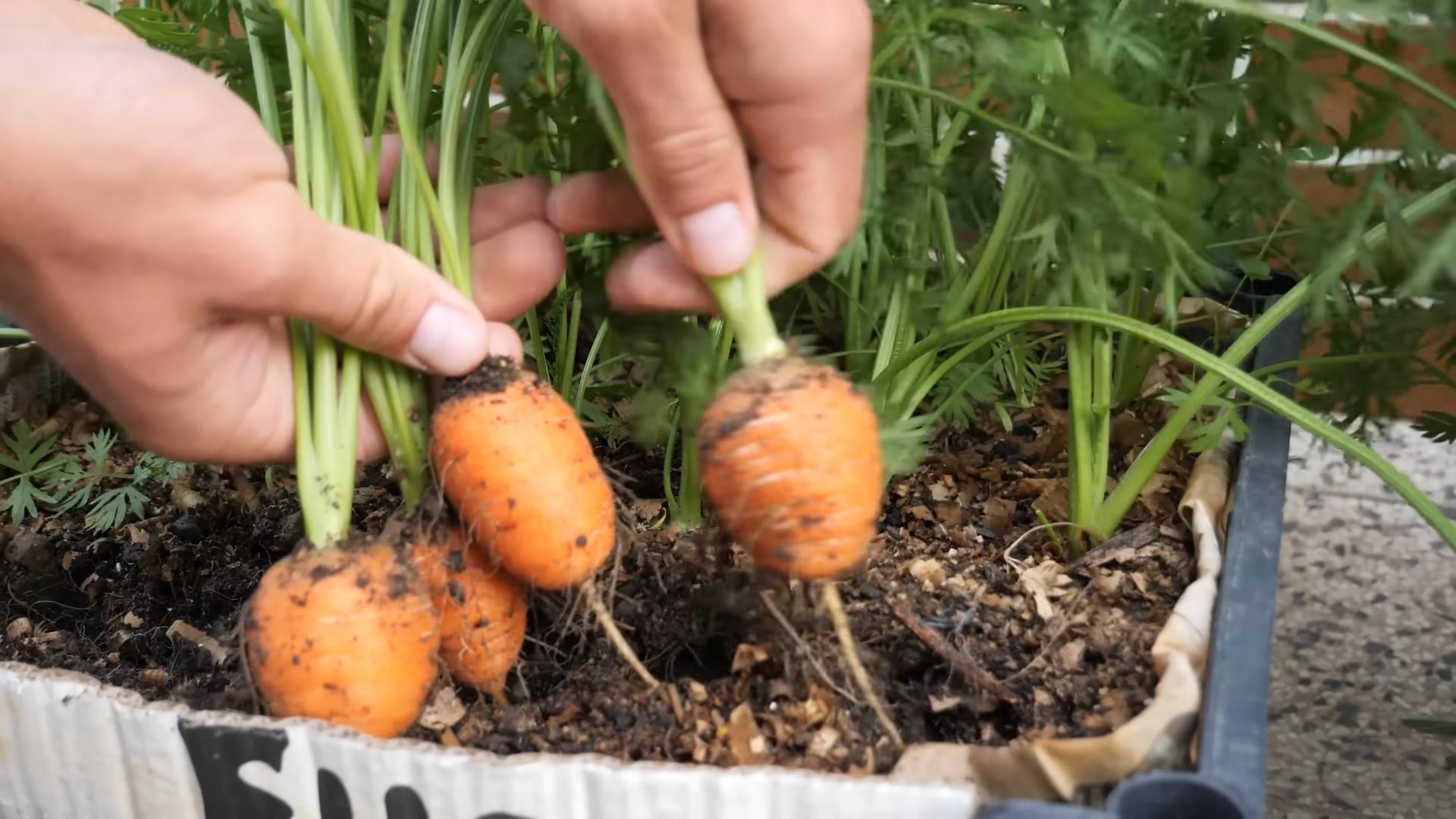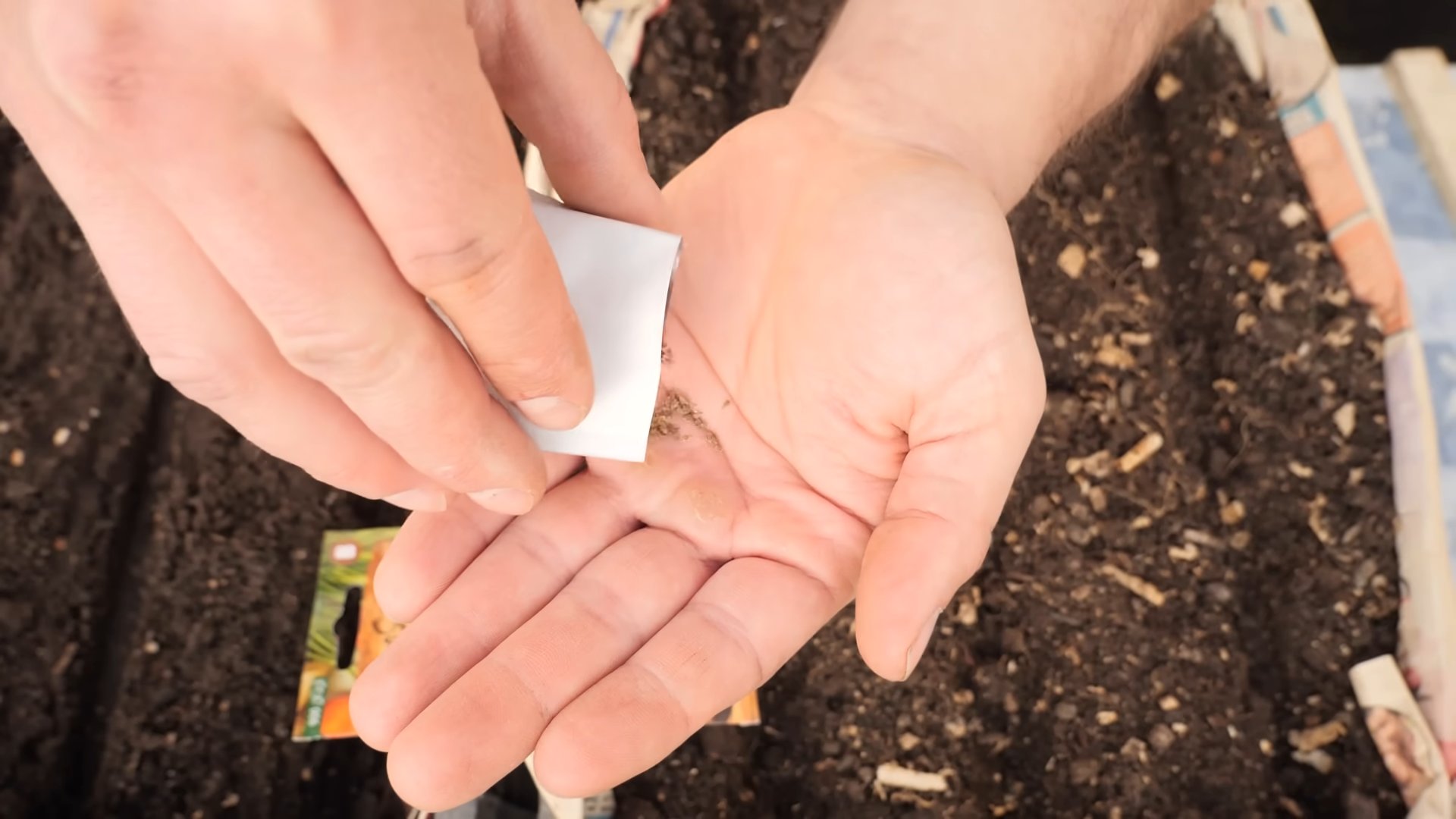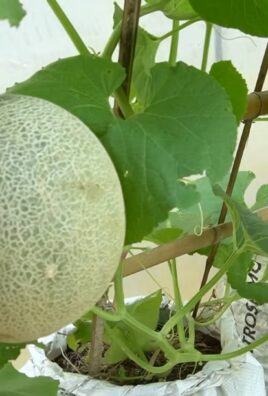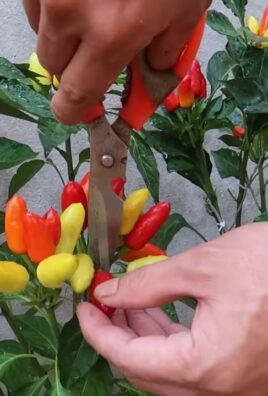Growing carrots from seed can seem daunting, but trust me, it’s one of the most rewarding experiences a home gardener can have! Imagine pulling a vibrant, sweet carrot straight from your own backyard – the taste is simply unmatched by anything you can buy in a store. For centuries, carrots have been cultivated, with evidence suggesting their use dates back to ancient Persia. Originally, they weren’t even orange! It was Dutch growers in the 17th century who popularized the vibrant hue we know and love today, as a patriotic tribute to the House of Orange.
But why bother with the effort of growing carrots from seed when you can just buy them? Well, for starters, you get to choose from a much wider variety than what’s typically available commercially. Plus, you’ll know exactly what went into growing them – no mystery pesticides or fertilizers. And let’s be honest, there’s a certain magic to nurturing a tiny seed into a delicious, crunchy vegetable.
This DIY guide is packed with simple, effective tricks and hacks that will help you succeed, even if you’re a complete beginner. We’ll cover everything from seed selection and soil preparation to thinning and pest control. With a little know-how, you’ll be enjoying a bountiful harvest of homegrown carrots in no time. So, grab your gardening gloves, and let’s get started on the journey of growing carrots from seed!

Growing Carrots From Seed: A Beginner’s Guide
Okay, so you want to grow carrots from seed? Awesome! It’s surprisingly easy and incredibly rewarding to pull your own vibrant, sweet carrots straight from the earth. I’ve been doing it for years, and I’m here to share everything I’ve learned to help you succeed. Let’s get our hands dirty!
Choosing the Right Carrot Variety
First things first, let’s talk carrots. There are so many different varieties, each with its own unique characteristics. Consider these factors when making your choice:
* Growing Season Length: Some carrots mature faster than others. If you have a short growing season, opt for early-maturing varieties like ‘Nantes’ or ‘Thumbelina’. For longer seasons, you can try ‘Danvers’ or ‘Imperator’ types.
* Soil Type: Long, slender carrots like ‘Imperator’ need loose, rock-free soil to develop properly. Shorter, rounder varieties like ‘Thumbelina’ are more forgiving in heavier soils.
* Personal Preference: Do you prefer sweet, crunchy carrots for snacking, or do you want larger carrots for juicing and cooking? Experiment with different varieties to find your favorites! Some popular choices include:
* ‘Nantes’: Classic, sweet, and cylindrical.
* ‘Danvers’: Reliable, tapered, and good for storage.
* ‘Imperator’: Long, slender, and often found in grocery stores.
* ‘Chantenay’: Short, thick, and good for heavy soils.
* ‘Thumbelina’: Round, bite-sized, and great for containers.
* Color: Carrots aren’t just orange anymore! You can find purple, yellow, white, and even red varieties. These add a fun and colorful twist to your garden and your plate.
Preparing Your Carrot Bed
Carrots are a bit picky about their soil. They need loose, well-drained soil that’s free of rocks and clumps. Here’s how to get your garden bed ready:
1. Choose a Sunny Location: Carrots need at least 6 hours of sunlight per day.
2. Clear the Area: Remove any weeds, rocks, or debris from the planting area.
3. Loosen the Soil: This is the most important step! Use a garden fork or tiller to loosen the soil to a depth of at least 12 inches. This will allow the carrot roots to grow easily.
4. Amend the Soil: Add compost or well-rotted manure to improve soil fertility and drainage. Work it into the soil thoroughly. Avoid using fresh manure, as it can cause forked roots.
5. Remove Rocks and Clumps: Sift through the soil to remove any remaining rocks or clumps. Even small stones can cause carrots to split or become misshapen.
6. Create Raised Beds (Optional): If your soil is heavy or poorly drained, consider creating raised beds. This will improve drainage and warm the soil more quickly in the spring.
7. Level the Surface: Rake the soil to create a smooth, level surface for planting.
Sowing Carrot Seeds
Carrot seeds are tiny, so planting them can be a bit tricky. But don’t worry, I’ll walk you through it:
1. Check the Last Frost Date: Carrots are a cool-season crop, so you can plant them 2-3 weeks before the last expected frost in spring. You can also plant them in late summer for a fall harvest.
2. Create Shallow Furrows: Use a hoe or your finger to create shallow furrows in the soil, about 1/4 to 1/2 inch deep and 1-2 inches apart.
3. Sow the Seeds Sparsely: This is the key to avoiding overcrowding. Sprinkle the seeds thinly along the furrows. Carrot seeds are notoriously small, so it’s easy to over-sow. Try mixing the seeds with sand to make them easier to handle and space out.
4. Cover the Seeds Lightly: Gently cover the seeds with a thin layer of soil or compost.
5. Water Gently: Use a watering can with a gentle rose to water the soil thoroughly. Be careful not to wash away the seeds.
6. Keep the Soil Moist: Carrot seeds need consistent moisture to germinate. Water the soil regularly, especially during dry spells. You can also cover the planting area with a piece of burlap or shade cloth to help retain moisture. Remove the covering once the seedlings emerge.
7. Mark the Rows: Label the rows with the carrot variety and planting date. This will help you keep track of your progress.
Thinning Carrot Seedlings
Thinning is crucial for growing healthy, well-formed carrots. If you don’t thin them, the seedlings will compete for resources and you’ll end up with a bunch of skinny, stunted carrots.
1. Wait Until Seedlings Emerge: Once the seedlings are about 1-2 inches tall and have a few true leaves, it’s time to thin them.
2. Thin Gradually: Thin the seedlings in stages, starting with the weakest ones.
3. Space Properly: Aim for a final spacing of about 2-3 inches between plants. This will give the carrots enough room to grow.
4. Gently Pull or Snip: Carefully pull out the unwanted seedlings, or snip them off at the soil line with scissors. Be careful not to disturb the roots of the remaining plants.
5. Water After Thinning: Water the soil gently after thinning to help the remaining seedlings recover.
Caring for Your Carrot Plants
Once your carrots are established, they’re relatively easy to care for. Here are a few tips to keep them happy and healthy:
* Water Regularly: Carrots need consistent moisture, especially during dry spells. Water deeply and regularly, aiming for about 1 inch of water per week.
* Weed Regularly: Keep the garden bed free of weeds, which can compete with the carrots for nutrients and water. Hand-pull weeds carefully to avoid disturbing the carrot roots.
* Fertilize Sparingly: Carrots don’t need a lot of fertilizer. If your soil is poor, you can side-dress with a balanced fertilizer a few weeks after thinning. Avoid using high-nitrogen fertilizers, as they can promote leafy growth at the expense of root development.
* Protect from Pests: Carrots can be susceptible to certain pests, such as carrot rust flies and nematodes. Use row covers to protect your plants from these pests. You can also use organic pest control methods, such as neem oil or insecticidal soap.
* Mulch (Optional): Apply a layer of mulch around the carrot plants to help retain moisture, suppress weeds, and regulate soil temperature.
Harvesting Your Carrots
The moment you’ve been waiting for! Harvesting your own carrots is so satisfying.
1. Check Maturity Dates: Refer to the seed packet for the expected maturity date of your carrot variety.
2. Look for Size and Color: Carrots are typically ready to harvest when they reach the desired size and color. You can gently brush away the soil around the top of the carrot to check its size.
3. Loosen the Soil: Before pulling the carrots, loosen the soil around them with a garden fork or trowel. This will make them easier to pull and prevent them from breaking.
4. Grasp the Tops: Grasp the carrot tops firmly near the base and gently pull straight up. If the carrots are difficult to pull, loosen the soil further.
5. Wash and Store: Wash the carrots thoroughly to remove any dirt. Store them in the refrigerator in a plastic bag or container. They should keep for several weeks.
Troubleshooting Common Problems
Even with the best care, you might encounter some problems when growing carrots. Here are a few common issues and how to address them:
* Forked Roots: This is usually caused by rocks or compacted soil. Make sure to prepare your soil properly before planting.
* Split Roots: This can be caused by inconsistent watering. Water regularly and deeply, especially during dry spells.
* Stunted Growth: This can be caused by poor soil fertility, overcrowding, or pests. Amend your soil with compost, thin your seedlings properly, and protect your plants from pests.
* Carrot Rust Flies: These pests can damage the roots of carrots. Use row covers to protect your plants.
* Nematodes: These microscopic worms can also damage the roots of carrots. Rotate your crops regularly and use nematode-resistant varieties.
Extra Tips for Success
* Succession Planting: Plant carrots every few weeks to ensure a continuous harvest throughout the growing season.
* Companion Planting: Plant carrots with onions, garlic, or rosemary to deter pests.
* Soil Testing: Test your soil to determine its pH and nutrient levels. This will help you choose the right amendments and

Conclusion
So, there you have it! Growing carrots from seed might seem daunting at first, but with a little patience and these simple steps, you’ll be harvesting your own sweet, crunchy carrots in no time. This DIY trick is a must-try for several reasons. First, it’s incredibly rewarding to nurture a plant from a tiny seed to a vibrant vegetable. Second, you have complete control over the growing process, ensuring your carrots are free from harmful pesticides and chemicals. Third, and perhaps most importantly, homegrown carrots taste significantly better than store-bought ones – the freshness and sweetness are simply unmatched.
But the benefits don’t stop there. Growing your own carrots is also a fantastic way to save money, reduce your carbon footprint, and connect with nature. It’s a therapeutic activity that can bring joy and satisfaction to your life.
Ready to take your carrot growing to the next level? Consider these variations:
* Succession Planting: Plant a new batch of seeds every few weeks to ensure a continuous harvest throughout the growing season.
* Companion Planting: Plant carrots alongside onions, garlic, or rosemary to deter pests and improve growth.
* Container Gardening: If you have limited space, grow carrots in containers or raised beds. Choose a container that is at least 12 inches deep to accommodate the root growth.
* Different Varieties: Experiment with different carrot varieties, such as Nantes, Chantenay, or Danvers, to find your favorite flavor and texture. Rainbow carrots are also a fun and colorful option!
* Soil Amendments: While the recipe emphasizes well-draining soil, consider adding compost tea every few weeks to give your carrots an extra boost of nutrients.
Don’t be afraid to experiment and adapt the process to suit your specific climate and growing conditions. Remember, gardening is a journey of learning and discovery.
We wholeheartedly encourage you to try this DIY trick for growing carrots from seed. It’s a simple, affordable, and incredibly rewarding experience. Once you’ve tasted the difference between homegrown and store-bought carrots, you’ll never go back!
We’d love to hear about your experiences. Share your photos, tips, and challenges in the comments below. Let’s build a community of carrot-growing enthusiasts and learn from each other. Happy gardening!
Frequently Asked Questions (FAQ)
What is the best time to plant carrot seeds?
The best time to plant carrot seeds depends on your climate. In general, carrots are a cool-season crop, so they thrive in temperatures between 60°F and 70°F (15°C and 21°C). For most regions, this means planting in early spring or late summer. In warmer climates, you can plant carrots throughout the fall and winter. Check your local frost dates to determine the best planting time for your area. You want to give the carrots enough time to mature before the weather gets too hot, as high temperatures can cause them to become bitter.
How long does it take for carrot seeds to germinate?
Carrot seeds can be slow to germinate, typically taking between 14 and 21 days. Several factors can affect germination time, including soil temperature, moisture levels, and seed quality. To speed up germination, keep the soil consistently moist but not waterlogged. You can also cover the planting area with a piece of burlap or cardboard to help retain moisture. Remove the cover once the seedlings emerge. Using fresh, high-quality seeds will also improve your chances of successful germination.
What kind of soil is best for growing carrots?
Carrots need loose, well-draining soil to grow properly. Heavy clay soil can restrict root growth and result in misshapen or stunted carrots. Amend heavy soil with compost, sand, or other organic matter to improve drainage and aeration. The ideal soil pH for carrots is between 6.0 and 6.8. Before planting, test your soil pH and amend it as needed. Avoid adding too much nitrogen to the soil, as this can promote leafy growth at the expense of root development.
How often should I water my carrots?
Carrots need consistent moisture to thrive, especially during germination and early growth. Water deeply and regularly, aiming to keep the soil consistently moist but not waterlogged. The frequency of watering will depend on your climate and soil type. In general, water every few days or when the top inch of soil feels dry to the touch. Avoid overhead watering, as this can promote fungal diseases. Instead, use a soaker hose or drip irrigation system to water the soil directly.
How do I thin carrot seedlings?
Thinning is essential for giving carrots enough space to grow. Once the seedlings are a few inches tall, thin them to about 1-2 inches apart. When the carrots are a bit bigger, thin them again to about 3-4 inches apart. Use scissors to snip off the unwanted seedlings at the soil line to avoid disturbing the roots of the remaining plants. You can eat the thinned seedlings as microgreens.
What are some common pests and diseases that affect carrots?
Carrots are susceptible to several pests and diseases, including carrot rust flies, aphids, nematodes, and fungal diseases like leaf blight. To prevent pest and disease problems, practice good garden hygiene, such as removing weeds and debris from the planting area. Use row covers to protect young plants from pests. If you notice signs of pests or diseases, treat them promptly with organic pesticides or fungicides. Crop rotation can also help prevent soilborne diseases.
How do I know when my carrots are ready to harvest?
Carrots are typically ready to harvest when they reach the desired size and color. The exact harvest time will depend on the variety you are growing. Check the seed packet for specific information. In general, carrots are ready to harvest when the tops of the roots are visible above the soil line. Gently loosen the soil around the carrots and pull them up by the tops. If the soil is dry, water it thoroughly before harvesting to make it easier to pull the carrots.
Can I grow carrots in containers?
Yes, you can grow carrots in containers, but you’ll need to choose a container that is at least 12 inches deep to accommodate the root growth. Use a well-draining potting mix and water regularly. Container-grown carrots may need more frequent fertilization than those grown in the ground. Choose shorter, rounder carrot varieties, such as ‘Thumbelina’ or ‘Paris Market,’ for container gardening.
How do I store harvested carrots?
To store harvested carrots, remove the tops and gently brush off any excess soil. Do not wash the carrots until you are ready to use them. Store the carrots in a cool, dark, and humid place, such as the refrigerator or a root cellar. You can wrap the carrots in a damp paper towel or store them in a plastic bag with a few holes for ventilation. Carrots can last for several weeks or even months when stored properly.
What are the benefits of growing carrots from seed?
Growing carrots from seed offers several benefits, including cost savings, control over the growing process, and access to a wider variety of carrot types. You can also ensure that your carrots are grown organically and free from harmful chemicals. Homegrown carrots taste significantly better than store-bought ones, and the act of gardening can be a therapeutic and rewarding experience. Plus, you get the satisfaction of knowing you nurtured your food from seed to table.




Leave a Comment